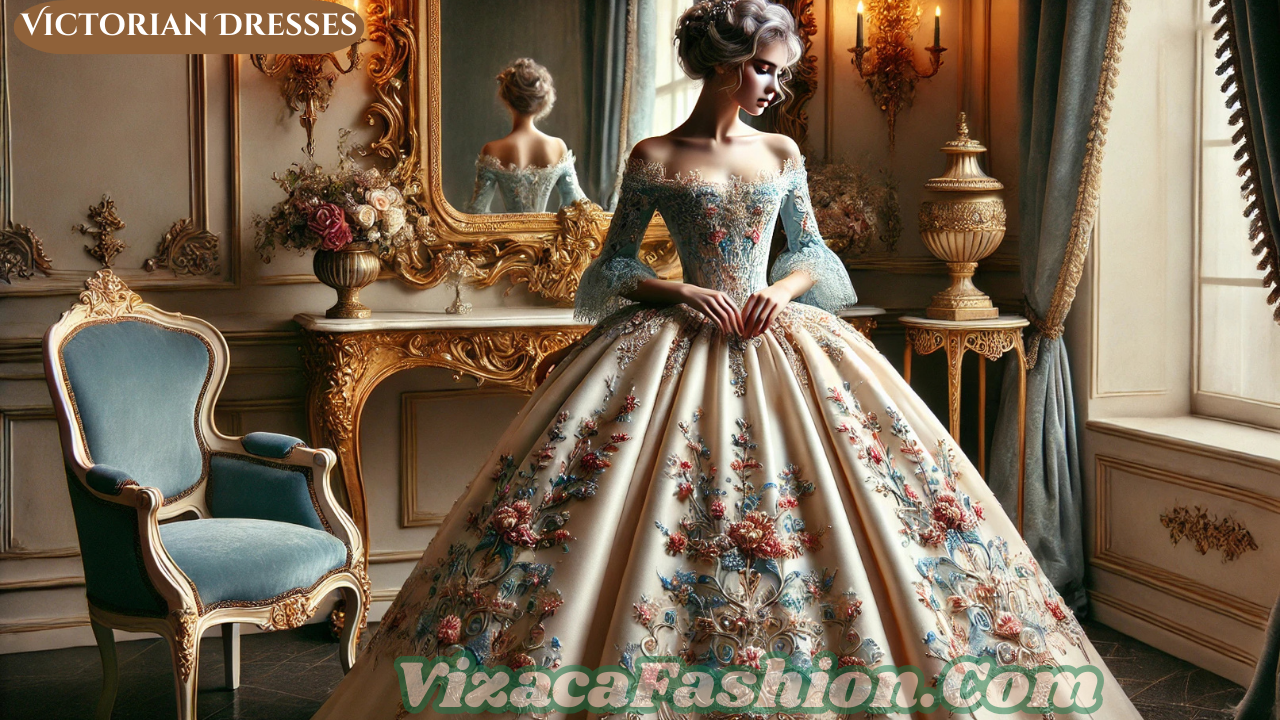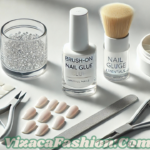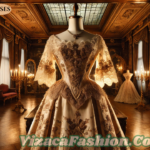Victorian dresses stand as iconic symbols of a period marked by elegance, intricate detail, and a strict adherence to societal norms. Originating during the reign of Queen Victoria (1837-1901), these dresses reflect the cultural, social, and technological influences of the 19th century. Let us dive into the history, characteristics, and cultural impact of Victorian dresses while understanding their timeless appeal.
The Historical Context of Victorian Dresses
The Victorian era brought about significant transformations in fashion. The Industrial Revolution played a pivotal role in making fabrics and clothing more accessible, allowing for greater experimentation in design. Social classes were distinctly defined, and clothing often reflected one’s status.
Victorian dresses were influenced by the queen’s personal style. In her early years, Queen Victoria favored lighter, romantic dresses with full skirts and modest embellishments. Her preference for mourning attire after the death of Prince Albert also shaped the darker, somber tones that became prevalent in later Victorian fashion.
Key Features of Victorian Dresses
1. The Silhouette
One of the most distinctive aspects of Victorian dresses is their silhouette, which evolved significantly over the era:
- 1830s to 1850s: Dresses featured wide bell-shaped skirts supported by crinolines and layers of petticoats.
- 1860s: The introduction of hoop skirts gave skirts their expansive shape while reducing the weight of undergarments.
- 1870s to 1880s: Bustles became fashionable, shifting the volume to the back of the dress and creating a more structured appearance.
- 1890s: Slimmer silhouettes gained popularity, with skirts that flared subtly at the bottom.
2. Fabrics and Textures
Victorian dresses were crafted from luxurious fabrics like silk, satin, and velvet for the upper classes, while cotton and wool were common among the working classes. Lace, embroidery, and intricate beadwork were often used as embellishments, showcasing wealth and craftsmanship.
3. Necklines and Sleeves
Necklines varied from high collars to wide, off-the-shoulder designs depending on the occasion and time of day. Sleeves also evolved:
- Puff sleeves were popular in the early Victorian period.
- Slimmer, more fitted sleeves came into fashion later, often featuring decorative cuffs.
Victorian Dresses for Different Occasions
Victorian fashion adhered to strict rules regarding attire for various occasions:
1. Day Dresses
These were designed for practicality and modesty, often featuring high necklines and long sleeves. Patterns and lighter fabrics were commonly used for casual wear.
2. Evening Gowns
Evening gowns were the epitome of opulence, characterized by lower necklines, shorter sleeves, and rich fabrics. Corsets and bustles were essential to achieving the desired silhouette.
3. Wedding Dresses
Queen Victoria’s choice of a white wedding gown in 1840 popularized the trend for brides to wear white. Victorian wedding dresses were adorned with lace, pearls, and floral motifs, symbolizing purity and elegance.
The Role of Corsets and Accessories
No discussion of Victorian dresses would be complete without mentioning corsets. These undergarments were integral to achieving the ideal hourglass figure. While they were praised for enhancing posture and creating a feminine shape, corsets also faced criticism for their restrictive nature.
Accessories such as gloves, hats, and parasols completed the Victorian ensemble. Jewelry often featured motifs like flowers and hearts, crafted from gold, pearls, and gemstones.
The Influence of Victorian Dresses on Modern Fashion
Victorian dresses continue to inspire contemporary designers, influencing bridal wear, evening gowns, and even casual attire. Elements such as lace detailing, puff sleeves, and corset-inspired tops frequently appear in modern fashion collections. The revival of vintage aesthetics often draws heavily from Victorian sensibilities.
Conclusion: The Enduring Legacy of Victorian Dresses
Victorian dresses remain a fascinating chapter in the history of fashion, representing an era of grandeur, sophistication, and cultural transformation. Their intricate designs and societal significance offer a glimpse into the values and aspirations of the 19th century. As we continue to draw inspiration from these timeless garments, Victorian dresses serve as a reminder of the enduring power of elegance and creativity.


